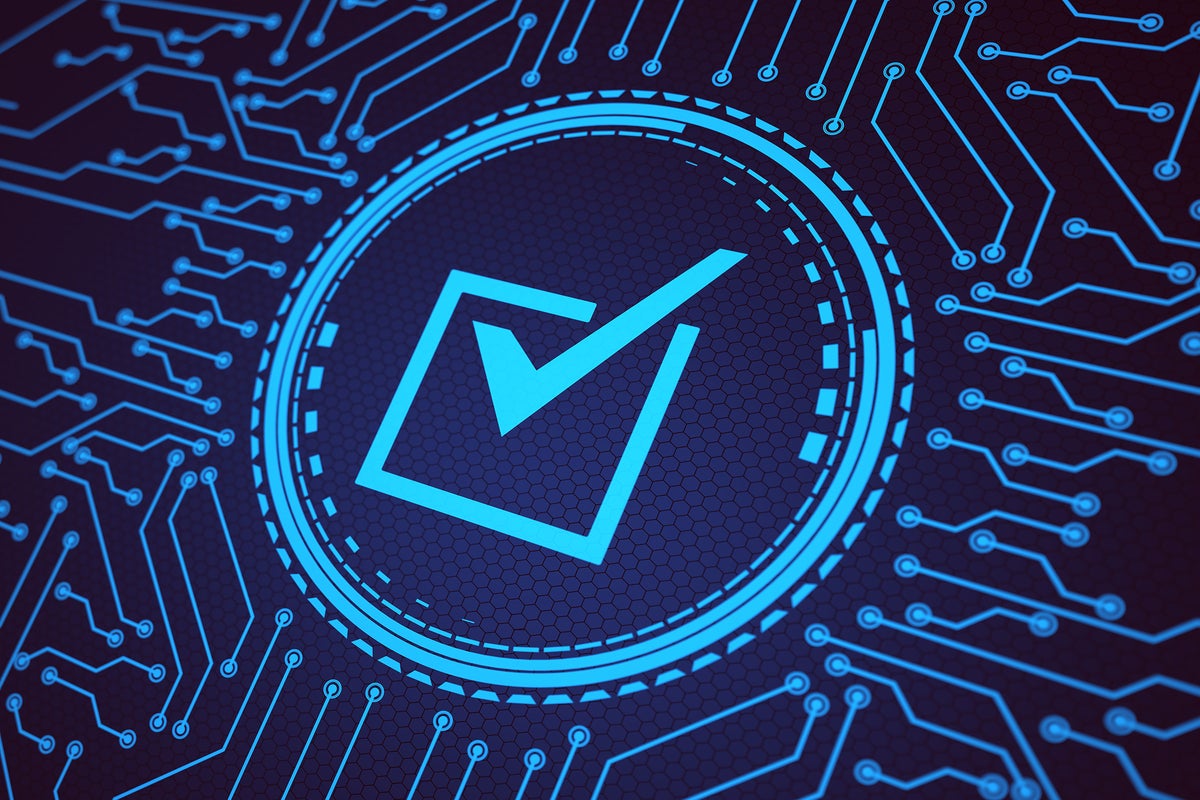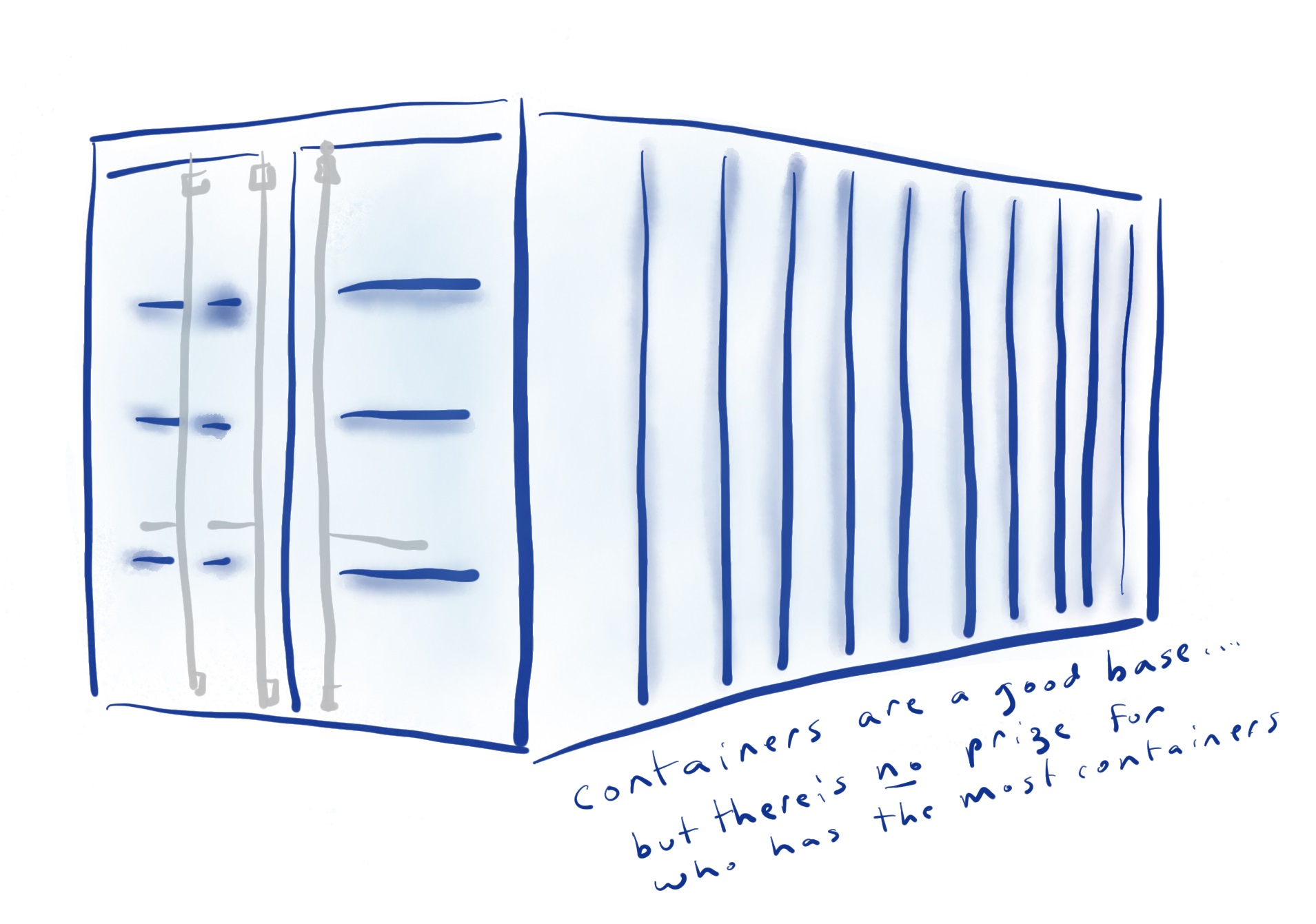Using Artificial Intelligence to Generate 3D Holograms in Real-Time on a Smartphone

By learning from each image pair, the tensor network tweaked the parameters of
its own calculations, successively enhancing its ability to create holograms.
The fully optimized network operated orders of magnitude faster than
physics-based calculations. That efficiency surprised the team themselves. “We
are amazed at how well it performs,” says Matusik. In mere milliseconds, tensor
holography can craft holograms from images with depth information — which is
provided by typical computer-generated images and can be calculated from a
multicamera setup or LiDAR sensor (both are standard on some new smartphones).
This advance paves the way for real-time 3D holography. What’s more, the compact
tensor network requires less than 1 MB of memory. “It’s negligible, considering
the tens and hundreds of gigabytes available on the latest cell phone,” he says.
The research “shows that true 3D holographic displays are practical with only
moderate computational requirements,” says Joel Kollin, a principal optical
architect at Microsoft who was not involved with the research. He adds that
“this paper shows marked improvement in image quality over previous work,” which
will “add realism and comfort for the viewer.”
Why 'Data Scientist' Will Continue To Be 'the Sexiest Job Of the 21st Century'
While demand for data science talent is through the roof, there are not enough
skilled professionals available to take on those roles. One primary reason for
this is the lack of clarity on the skills required for different roles within
the field of data science. Most companies look for individuals possessing
certain specialized skill sets rather than the ‘jacks-of-all-trades’. In order
to prepare for the best opportunities and avoid getting tagged as a
‘generalist’, one needs to first appreciate the nuances that make these
different roles unique. For instance, how is a data scientist different from a
data engineer or a data analyst? Contrary to popular perception, these roles are
not interchangeable. For instance, a data scientist is one who employs advanced
data techniques such as clustering, neural networks, decision trees to help
derive business insights. Apart from the requisite coding skills, data
scientists typically need to be adept at programming languages such as Java,
Python, SQL, R, and SAS. In addition, they require working knowledge of Big Data
frameworks such as Hadoop, Spark, and Pig. Data scientists also need to be
familiar with new technologies such as deep learning, machine learning, etc.
Containers need standard operating environments too

Even in the world of cloud native and containers, a standard operating
environment matters. The set of criteria that should be used to evaluate
container base images is quite similar to what we’ve always used for Linux
distributions. Evaluate things like security, performance, how long the life
cycle is (you need a longer life cycle than you think), how large the ecosystem
is, and what organization backs the Linux distribution used. (See also: A
Comparison of Linux Container Images.) Start with a consistent base image across
your environment. It will make your life easier. Standardizing early in the
journey lowers the cost of containerizing applications across an organization.
Also, don’t forget about the container host. Choose a host and standardize on
it. Preferably, choose the host that matches the standard container image. It
will be binary compatible, designed and compiled identically. This will lower
cognitive load, complexity of configuration management, and interactions between
the application administrators and operations teams responsible for managing the
fleet of servers underlying your containers.
Open Source Blockchain Microservices To Help You Build Your Own Blockchain
Like any microservice, the block store and p2p are simple (and easy to
understand) programs. What makes these microservices special is that they are
the first blockchain-specific microservices ever to be open-sourced. As you can
see, we love open-source software development and decentralization but we’ve
been saddened to see how many projects that claim to share these values pursue
subtle (and not so subtle) ways of ensuring that they maintain control while
developing most of their software behind closed doors. As one of the most
experienced dApp and blockchain developers in the world, we understand better
than most how difficult it can be to develop in the open, especially when you
don’t have the right tools. So we’ve been delighted to find that by launching
and designing Koinos the right way, we’ve found ourselves in a position where it
makes perfect sense to continue developing it in the right way too; out in the
open. The modularity of Koinos means that the more chefs that are in the
kitchen, the better. We want developers to begin digging into the code as soon
as possible and helping to make it into the protocol they truly need, instead of
the protocol we believe they need.
Legacy tech integration issues impede telcos’ digitisation ambitions

While only a third of operators worldwide said finding the right talent was
hindering their plans for digital development, the majority of such businesses
were located in emerging markets such as Latin America, Africa and the Middle
East. This, according to the survey, highlighted a pronounced skills gap between
developed and emerging markets, with the latter still struggling to find the
skills needed to facilitate digitisation. Just under half (46%) stated that cost
was the biggest issue to realising transformation ambitions, suggesting that the
path to digitisation was desirable and investment is ready. A surprisingly low
number of telcos viewed return on investment (ROI) as a barrier, with only
two-fifths of respondents expressing concerns that a return might not be easily
established. Given that the telecommunications industry is traditionally very
ROI-focused, the report authors said this suggested there was a great deal of
confidence in the path towards digitisation if the aforementioned barriers could
be overcome. In conclusion, the report said the findings implied a phased
approach towards digitisation was in the best interests of telcos worldwide to
ensure interoperability between technology and services and maintain what was
described as a “seamless” customer experience.
The dangers of misusing instant messaging and business collaboration tools
The research shows this challenge is compounded by the amount of time employees
spend using messaging and collaboration apps: time spent on tools such as Zoom
and Teams has increased by 13% in the US since the start of the pandemic. This
means employees are spending, on average, two and a half hours every day on
these applications, with 27% of US employees spending more than half the working
week on these tools. A significant amount of business is now routinely conducted
on these channels and employees are taking agreements as binding. For example,
as a result of receiving information over messaging and collaboration tools,
almost 24% of US employees have accepted and processed an order, 25% have
accepted a reference for a job candidate, and 20% have accepted a signed version
of a contract. Sensitive data is being shared on these tools even though
39% of US employees have been reprimanded by bosses. These admonishments may
have been in vain, however, as 75% of all US workers say they would continue to
share this type of information in the future.
The Rise of the Chief Data Scientist

Right now, organizations are investing heavily in the chief data scientist
role. This individual manages a range of data-driven functions, including
overseeing data management, creating data strategy, and improving data
quality. They also help their organizations extract the most valuable and
relevant insights from their data, leveraging data analytics and business
intelligence (BI). In this capacity, the chief data scientist has a far deeper
understanding of how AI and machine learning (ML) can improve data management
than the CTO, who has a broader knowledge base but not the deeper expertise.
This is critical as ML has emerged as a key driver in improving data quality
and access as navigating the journey from big data ideas to real-world machine
learning implementation is a challenging endeavor. In this scenario, the chief
data scientist serves as the trusted navigator, understanding that data is the
fuel for key initiatives, knowing the non-deterministic risk of developing
those capabilities. Moreover, this individual can manage the expectations of
C-suite executives, helping them better understand the reality of what ML can
accomplish while mitigating the risks associated with data-driven
initiatives.
Enterprises Wrestle With Executive Social Media Risk Management
Companies know that their executives are targets. In our digital risk survey,
we found that 25% of enterprises cite executives' personal social media as a
major risk factor to the company's overall security. And they know that the
consequences of an executive cyberattack would be severe. In our poll, 70% of
respondents said their company would suffer brand or reputational damage. Half
of the respondents predicted potential risk to shareholder value. One in three
enterprises are most fearful of impersonation or fake accounts. One in four
are most worried about the possibility of an account takeover. However,
despite awareness of the threats, the sophistication of executive social media
risk management is lagging. ... The new generation of cloud channels is
very different. Tools like Twitter and LinkedIn live across multiple devices.
They cross between professional and personal spheres. They generate
interactions at unprecedented volume and velocity — and out of the box,
security teams have no visibility. Today, all executives leverage social
media, and they are bombarded by social media cybersecurity threats. Security
teams know that banning these tools isn't an option. Why? Because people will
use them anyway.
Ways to Break Gender Gridlock in Cybersecurity Careers

In many ways, cybersecurity roles should be fair game for hiring and promotion
because of the importance of code versus gender but that is not always the
case in practice. “Behind the screen, in theory, everyone is equal,” she says.
“Clearly that is not what is happening.” Guerrieri would like to see more
networking among women in cybersecurity to facilitate the creation of support
systems to encourage them to remain and thrive in this career path. Some women
have seen opportunities in cybersecurity emerge in response to the pandemic,
says Sabrina Castiglione, CFO at Tessian, an enterprise email security
software provider. Her company recently conducted a survey that included
responses from 200 female cybersecurity professionals, 100 in Britain and 100
in the United States. Castiglione says some of the responses showed an
increased sense of job surety among women in cybersecurity as the world coped
with the COVID-19 pandemic. “In cybersecurity, women are saying they feel more
secure or that with the impact of the pandemic, their job security has
actually increased,” she says. Of the women respondents to the survey, 49%
felt more secure in their jobs, Castiglione says.
Cloud-Native Is about Culture, Not Containers

“What are we actually trying to achieve?” is an incredibly important question.
When we're thinking about technology choices and technology styles, we want to
be stepping back just from “I'm doing Cloud-native because that's what
everybody else is doing” to thinking “what problem am I actually trying to
solve?” To be fair to the CNCF, they had this “why” right on the front of
their definition of Cloud-native. They said, "Cloud-native is about using
microservices to build great products faster." We're not just using
microservices because we want to; we're using microservices because they help
us build great products faster. ... Cost savings, elasticity, and delivery
speed are great, but we get all of that just by being on the Cloud. Why do we
need Cloud-native? The reason we need Cloud-native is that a lot of companies
found they tried to go to the Cloud and they got electrocuted. It turns out
things need to be written differently and managed differently on the cloud.
Articulating these differences led to the 12 factors. The 12 factors were a
set of mandates for how you should write your Cloud application so that you
didn't get electrocuted.
Quote for the day:
"Leadership involves finding a parade
and getting in front of it." -- John Naisbitt
No comments:
Post a Comment